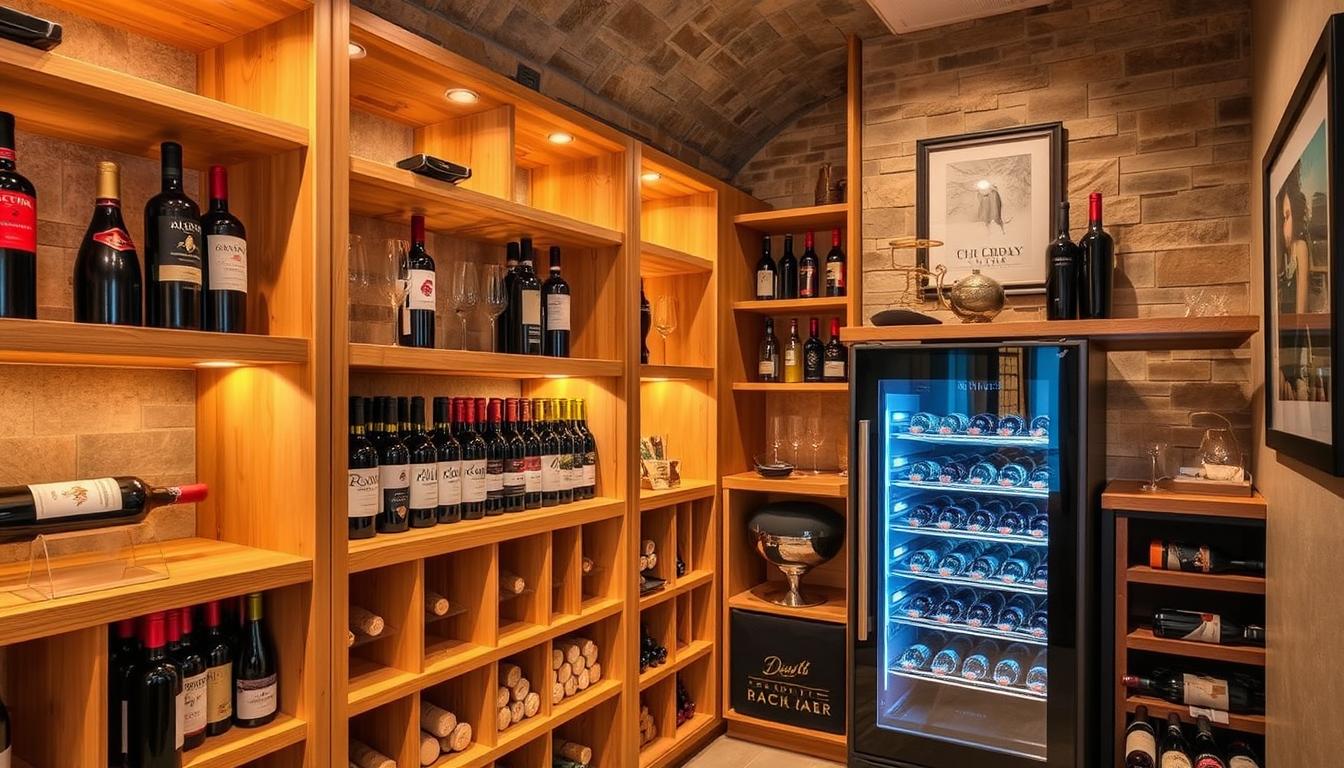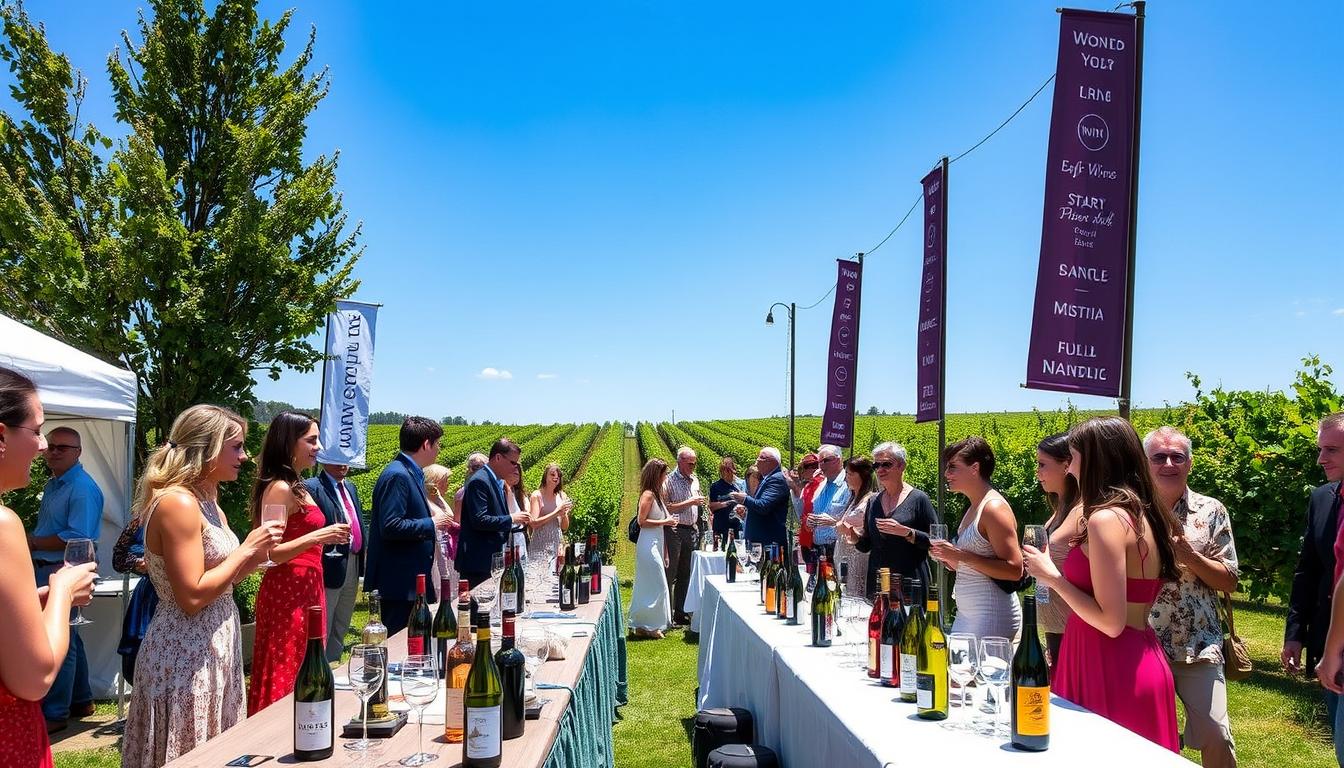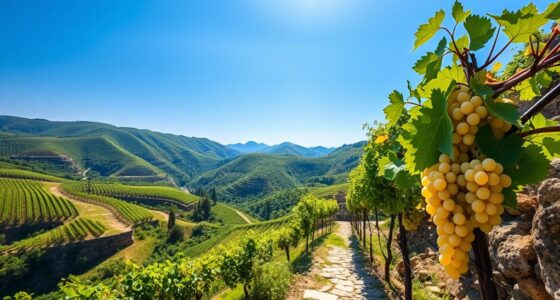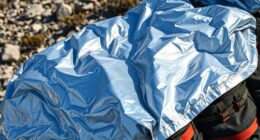Imagine uncorking a bottle of wine that transports you to cherished memories—laughter-filled gatherings, intimate dinners, and celebrations with loved ones. Every sip tells a story, and every bottle carries the potential for a new experience. But to truly enjoy your wine collection, proper wine storage is essential. Whether you’re a casual enthusiast or a devoted collector, understanding how to preserve your wines can make all the difference. The right wine storage solutions can enhance not just the taste, but also the enjoyment of every moment shared with friends and family. From establishing a wine cellar to selecting the perfect wine rack or wine cooler, your journey to optimal wine preservation starts here.
Key Takeaways
- Proper wine storage preserves flavors, aromas, and overall quality.
- The ideal temperature for wine storage ranges from 55-59°F (12-15°C).
- Humidity levels should be maintained around 70% to keep corks healthy.
- Consider aesthetics when choosing between wine racks, cabinets, and coolers.
- Proper light exposure and protection from UV rays are crucial for preservation.
- Investing in wine insurance can protect your valuable collection.
Understanding the Importance of Wine Storage
The significance of wine storage cannot be overstated. Proper management is essential to preserve wine quality, ensuring that your collection maintains its character and flavor. Ideal conditions allow wines to age gracefully, enhancing aromas and textures crucial for a delightful tasting experience.
To achieve optimal wine collection management, consider the following factors:
- Temperature: Wine should be stored at around 55°F (13°C) for all types, whether reds, whites, or sparkling varieties. Temperature variation can lead to premature oxidation and spoilage.
- Humidity: Maintaining humidity levels between 50% and 80% helps keep corks moist, preventing oxidation while preserving the wine’s integrity.
- Light Exposure: Ultraviolet (U.V.) rays can alter the flavor and structure of wine, particularly affecting whites. Minimize light exposure to maintain the wine’s complex molecular composition.
- Movement: Wine should experience minimal movement, as vibrations can disrupt the delicate molecular structure, potentially ruining flavor.
- Environmental Odors: Store wine in an odor-free environment. Over time, unpleasant odors can seep into bottles, altering the wine’s aroma.
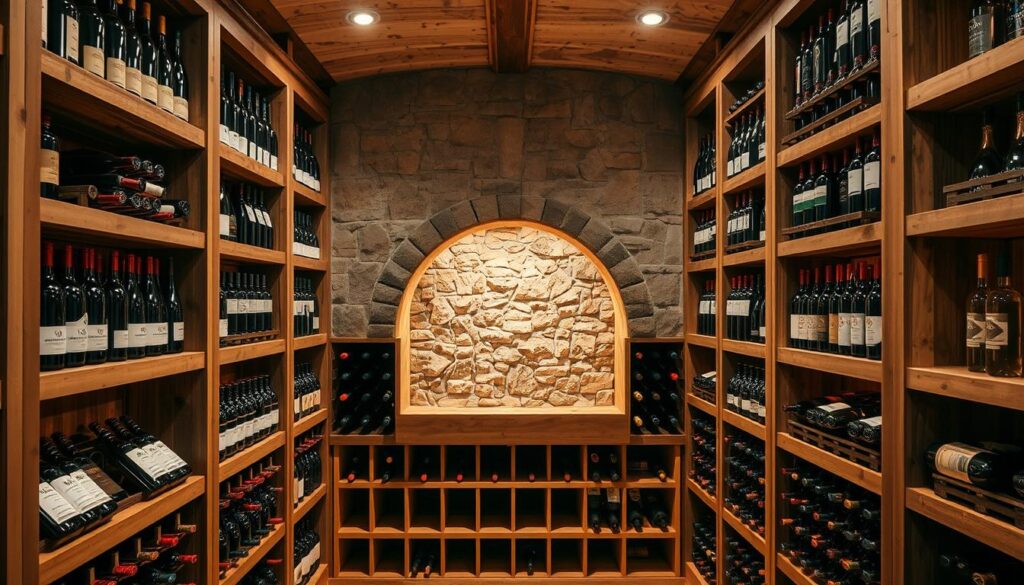
Refrigerators can work for short-term storage to slow down aging, but long-term storage in standard fridges is discouraged. Wine refrigerators provide a more controlled environment, avoiding common issues like temperature swings and strong odors. Additionally, replicating cellar conditions—cold, dark, and slightly humid—will foster the best aging environment for your wines.
Understanding the wine storage importance and implementing best practices can significantly enhance your enjoyment and investment in your wine collection.
Factors Affecting Wine Quality
Understanding the factors affecting wine quality is essential for both enthusiasts and professional winemakers. Several elements come into play during the journey from grape to glass. One significant aspect is the climate in which the grapes are grown. Regions with cooler temperatures generally produce wines with higher acidity while being lower in sugar and alcohol, creating a refreshing profile. On the other hand, hotter climates yield grapes with increased sugars, leading to wines that are fuller-bodied and with higher alcohol content.
The methodology of grape harvesting also plays a pivotal role. Mechanical harvesting is efficient but sometimes compromises quality as it may include under-ripe grapes. Manual harvesting, while labor-intensive, ensures that only the best grapes reach the winery, enhancing the overall wine quality.
During production, several key processes, including maceration, fermentation, extraction, and aging, influence the wine’s final characteristics. The wine aging factors encompass the type of container used, such as oak barrels versus steel tanks, which can impart different flavors and complexities to the wine. The fermentation temperature also matters; ideal ranges vary depending on the type of wine, from cooler temperatures for whites to warmer for reds.
Quality wines exhibit a balance of acidity, tannins, sweetness, and alcohol, with each contributing to the total flavor experience. High-quality wines often show typicity, representing their varietal characteristics authentically, alongside intricate flavor profiles that develop over time.
Furthermore, environmental conditions such as terroir profoundly impact quality. This includes the soil composition, climate, and topography where the grapes are cultivated. Weather patterns also affect ripening; optimal conditions lead to grapes that achieve the right balance of sugar and acidity, avoiding the need for artificial adjustments.
In addition to these factors, wine preservation tips are vital for maintaining the integrity of your wine collection. Proper storage, with attention to temperature, humidity, and light exposure, ensures that the wine remains enjoyable long after its bottling.

| Factor | Description |
|---|---|
| Climate | Cool climates produce higher acidity; hot climates yield higher sugars and alcohol. |
| Harvest Method | Manual harvesting ensures quality; mechanical is quicker but can include inferior grapes. |
| Production Steps | Maceration, fermentation, extraction, and aging shape flavor and structure. |
| Aging Containers | Influence flavor; oak adds complexity, while steel can maintain purity. |
| Storage Conditions | Temperature stability and humidity levels keep wine from spoiling. |
Choosing the Right Wine Storage Solutions
When it comes to wine storage solutions, making the right choice can enhance your collection’s longevity and flavor. Whether you prefer wine racks, coolers, or cabinets, each option offers unique benefits that suit different needs and spaces.
Wine Racks: A Versatile Option
Wine racks provide an accessible and cost-effective way to store bottles. Available in various materials such as wood, metal, and acrylic, they come in many sizes and designs. From compact freestanding units to elegant wall-mounted options, racks effectively maximize space while allowing easy organization. For instance, a popular 75-bottle wine storage rack can be found online for $72.99, making it a practical choice for enthusiasts.
Wine Coolers: Temperature-Controlled Storage
Wine coolers are essential for anyone serious about wine preservation. These specialized appliances maintain consistent temperature and humidity levels, ideal for both short-term and long-term storage. Models vary in size, ranging from compact options for small collections to larger units for avid collectors. Features like dual-zone cooling and UV-resistant glass help protect wine integrity, ensuring it maintains its intended flavor and aroma. It’s recommended to store all types of wine at around 55°F for optimal aging.
Wine Cabinets: Aesthetic and Functional Choices
Wine cabinets combine functionality with elegance, providing not only optimal storage conditions but also enhancing home décor. They create controlled environments necessary for wine aging, allowing you to showcase your collection in style. Equipped with features such as temperature control and security locks, cabinets are particularly suitable for limited spaces or when integrating into home design. As you explore different wine storage solutions, consider how each option aligns with your aesthetic preferences and functional requirements.
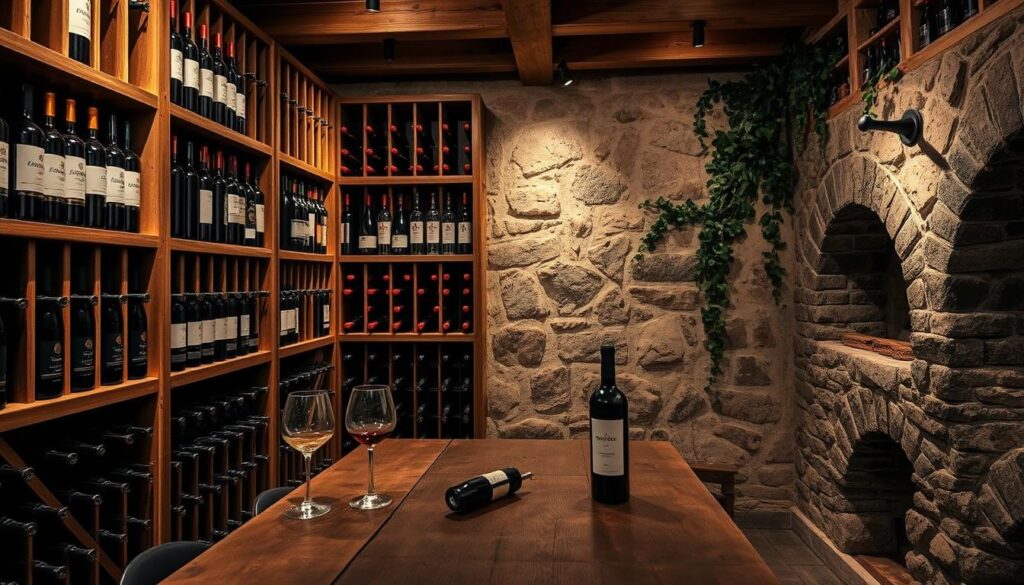
| Storage Solution | Benefits | Best For |
|---|---|---|
| Wine Racks | Cost-effective, offers space maximization | Organizing collections, tight budgets |
| Wine Coolers | Maintains ideal temperature and humidity | Long-term preservation |
| Wine Cabinets | Stylish, secure storage with optimal aging conditions | Aesthetic integration, limited spaces |
Wine Storage: Best Practices for Preservation
Preserving the quality of your wine relies on understanding wine preservation best practices. Begin with maintaining a stable storage temperature. The ideal range for all types of wines, including reds, whites, and sparkling wines, is approximately 55°F. Avoid exposing your wine to extreme temperatures, as fluctuations above 70°F or below 45°F can damage its flavor and quality.
Humidity levels play a significant role in wine bottle care. Aim for a humidity level between 50% and 80% to prevent cork drying and oxidation. Storing wine bottles horizontally keeps the cork moist, preserving its integrity. This method has been recommended for generations and is essential for long-term storage.
Protecting your wine from light exposure is crucial. Direct sunlight and heat can negatively impact wine, fading labels and accelerating aging. For this reason, consider creating a cool, dark space for your collection. Utilizing a dedicated wine refrigerator offers a more suitable environment than a regular fridge, controlling temperature and humidity while minimizing vibrations.
Consider adopting these wine storage tips:
- Open aged wines promptly to enjoy them at their peak, as they can decline rapidly.
- Rotate your bottles periodically to ensure even aging.
- Avoid placing your wine near heat sources, such as stoves.
- Utilize modern underground spaces, such as basements, for optimal aging conditions.
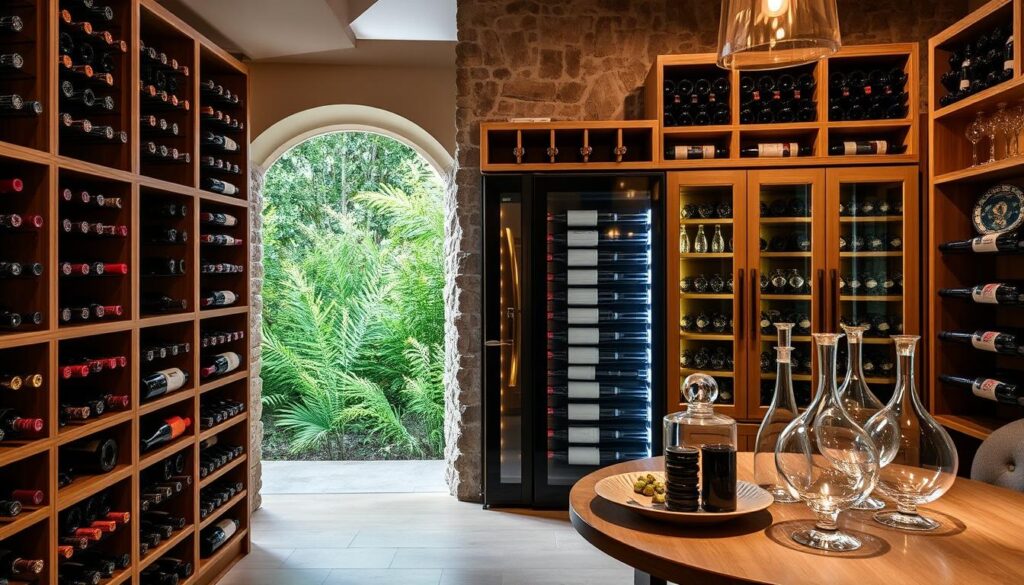
Creating Your Own Wine Cellar at Home
Building a home wine cellar can be a fulfilling project for wine enthusiasts seeking to preserve their collections in optimal conditions. For those with limited space, transforming an area such as a closet or an under-stair nook can create an effective home wine cellar. Successful wine cellar organization starts with careful planning and the right materials.
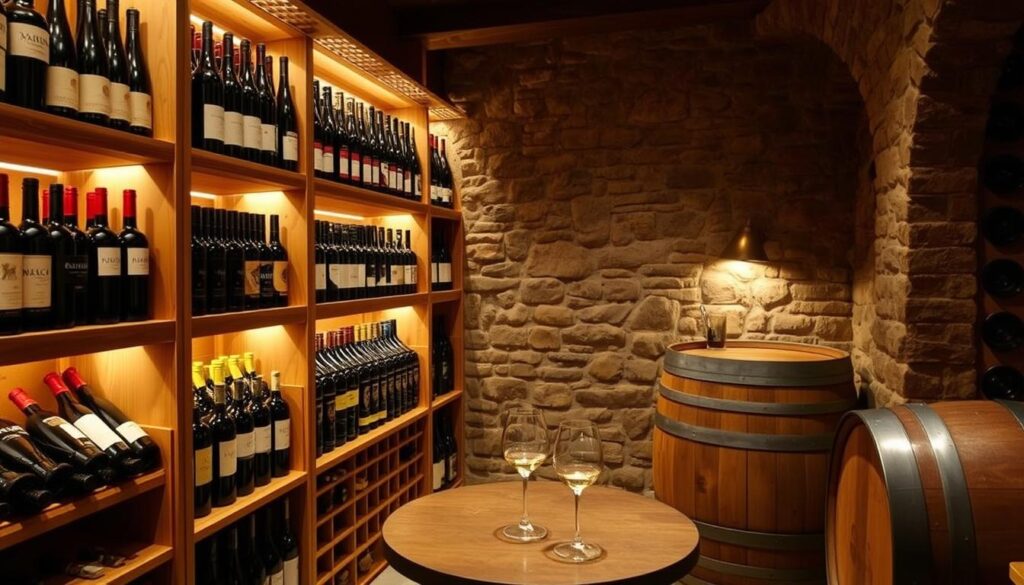
DIY Wine Cellars: Space-Saving Ideas
Implementing DIY wine cellar ideas allows you to effectively utilize small spaces while catering to your specific needs. A modest-sized space of just 25 square feet can accommodate up to 500 bottles, making it perfect for smaller collections. Here are some key considerations for your project:
- Insulation: Adequate insulation enhances your wine cellar’s efficiency, maintaining temperature consistency. Consider options like framing walls with wider studs to improve thermal performance.
- Climate Control: Invest in a cooling unit designed specifically for wine storage. These units help maintain the ideal 55 degrees Fahrenheit, critical for preserving delicate flavors.
- Racking Systems: Choose racking solutions that fit your space. A cost-effective pine-wood rack purchased on Amazon can store varying numbers of bottles, with 72-count racks for about $60 and 96-count for around $80. For added safety, secure the rack to the wall using L-shaped brackets rated for around 200 lbs.
When considering DIY wine cellar solutions, remember that the average spacing between rows is about 3.5 inches. This spacing might pose challenges for wider bottles such as Burgundy or Champagne. To avoid breakage during assembly, ensure that all interlocking connections on your wine rack pieces fit together snugly without excessive pressure.
Investing in a DIY home wine cellar not only enhances your wine storage capabilities but also allows ample room for collection expansion. Take this opportunity to create a unique space that reflects your passion for wine.
Temperature and Humidity Guidelines for Wine Storage
When it comes to preserving wine, understanding the temperature guidelines for wine storage and maintaining appropriate wine humidity levels is essential. Different wine types require specific temperature ranges for optimal aging. An ideal temperature range for wine storage lies between 45°F (7°C) and 65°F (18°C). The gold standard temperature for wine cellars is typically 55°F (13°C). For red wines, a thriving temperature range of 55-65°F (12-18°C) is recommended, while white wines prefer slightly cooler conditions at around 49-55°F (9-13°C). Sparkling wines do best stored around 45°F (7°C).
Ideal Temperature Ranges for Different Wines
To maximize the quality and flavor of your wine collection, it is vital to adhere to the following storage conditions:
| Wine Type | Optimal Storage Temperature |
|---|---|
| Red Wines | 55-65°F (12-18°C) |
| White Wines | 49-55°F (9-13°C) |
| Sparkling Wines | 45°F (7°C) |
Maintaining a consistent internal temperature is crucial, as fluctuations can lead to spoilage and negatively affect the aging process of your wine.
Maintaining Optimal Humidity Levels
Maintaining optimal humidity levels—around 60-70%—is crucial for preserving wine. This balance helps prevent corks from drying out, which can lead to spoilage, while excessively high humidity can result in mold growth on labels. You can achieve the recommended humidity levels by using humidifiers in wine storage areas. A well-regulated environment ensures the cork seal’s integrity, protecting the quality of your treasured wines.
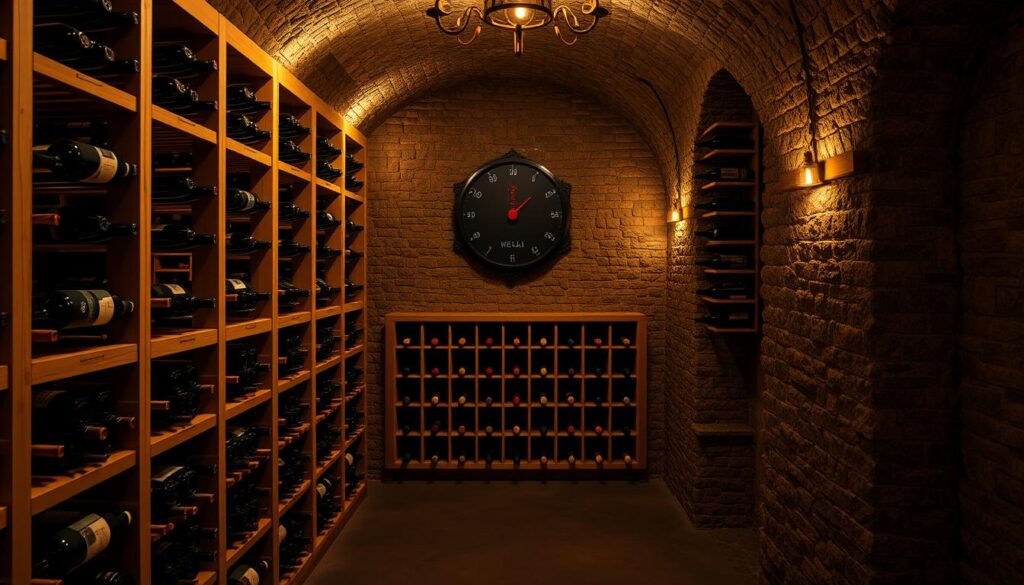
Light and Stability: Critical Elements of Wine Storage
When considering your wine collection, two vital aspects come into play: wine storage light exposure and wine stability. Light, particularly ultraviolet (UV) light, poses a significant risk to the integrity of your wine. Exposure to UV rays can lead to undesirable flavors and aromas, altering your wine’s intended profile. This makes it essential to store your bottles in dark spaces or utilize UV-filtering glass when displaying your collection.
Wine stability is equally important. Fluctuations in temperature and vibrations can negatively impact the aging process. A stable environment allows wines to mature effectively, reaching their peak flavor and quality. You should aim for a consistent temperature around 55°F, with minimal disruptions.
To ensure optimal conditions for wine storage, focus on the following:
- Keep wine stored away from direct sunlight and strong light sources.
- Utilize wine racks or cabinets that provide adequate protection against UV light.
- Prevent vibrations by placing bottles on stable surfaces, allowing them to age without disturbances.
- Store bottles horizontally to maintain cork moisture and avoid oxidation.
Ultimately, ensuring proper UV protection within your wine storage setup enhances the potential for your wines to evolve gracefully. Prioritizing these critical elements helps maintain wine stability and preserves the quality of your valuable collection.
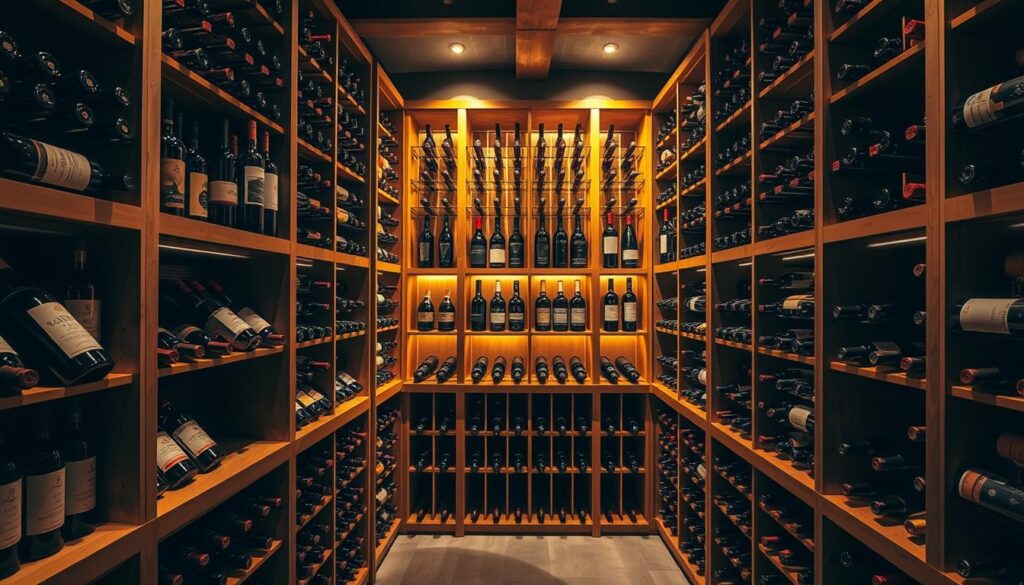
Expanding Your Wine Collection: Future Storage Solutions
As your passion for wine grows, you’ll soon realize that planning for future wine storage becomes essential. An expanding wine collection can require innovative solutions to preserve and showcase your bottles effectively. Investing in scalable storage options such as modular racks or temperature-controlled wine coolers allows you to stay organized while accommodating your growing selection.
Consider the following wine organization ideas:
- Modular racks that can be expanded as your collection grows.
- Climate-controlled wine coolers that maintain optimal temperatures between 55°F and 58°F.
- Secure storage facilities that offer enhanced features like temperature regulation, humidity control, and protection from light.
Quality storage extends beyond aesthetics. When bottles are stored sideways, it helps keep the cork moist, which is vital for preserving wine quality. Maintaining an ideal humidity level of around 70% protects the cork from drying out, thus ensuring your wine ages gracefully.
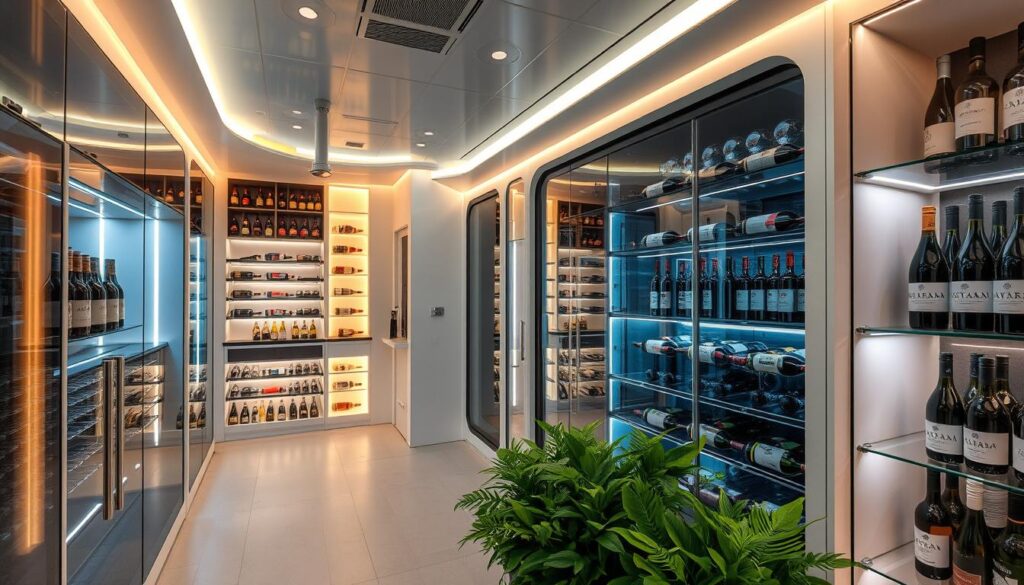
Consider facilities like Wine Vault Co., which provides a secure environment with a temperature range of 53°F to 57°F. Their vault not only supports optimal aging conditions but also safeguards your investment with features such as electronic key access and surveillance. Planning for future wine storage is not just about acquiring space; it’s about creating the optimal environment for your treasured collection.
| Feature | Recommended Conditions |
|---|---|
| Ideal Storage Temperature | 55°F (13°C) |
| Humidity Level | 60% – 70% |
| Storage Orientation | Sideways |
| Temperature Range for Aging | 55°F to 58°F (13°C to 14°C) |
By enhancing your wine storage savvy, you can ensure that your expanding wine collection flourishes in favorable conditions for years to come.
Conclusion
Understanding the significance of effective wine storage solutions is essential for enjoying and preserving your wine collection. Implementing the best practices discussed throughout this article ensures that your wine not only remains in top-notch condition but is also ready to be savored at its best. From selecting the appropriate storage options to maintaining ideal temperature and humidity levels, you can enhance your wine collection management with practical solutions.
As you contemplate your wine storage setup, whether it’s a dedicated wine cellar or a versatile wine rack, consider the long-term benefits of preservation. Investing in high-quality storage options, like a Le Cache wine storage unit for a substantial capacity or even building your own cellar, can greatly influence the overall enjoyment of your wines over time. Always prioritize the proper climate control, as it plays a pivotal role in effective wine preservation and contributes to the longevity of each bottle.
With the growing trend towards immediate consumption and the emergence of innovative wine packaging solutions, knowing how to manage your wine collection becomes even more pertinent. By blending modern practices with traditional methods and staying informed on the latest storage recommendations, you can create a haven for your wines that complements your lifestyle and elevates your wine experience. Staying up to date with top wine industry trends such as sustainable packaging, natural winemaking, and the rise of small-batch producers can also inform your wine storage decisions. Additionally, seeking out professional advice from sommeliers or wine experts can provide valuable insights into the best ways to curate and preserve your collection. By adapting to the changing landscape of the wine industry, you can ensure that your wine storage practices align with the latest advancements and best practices.
